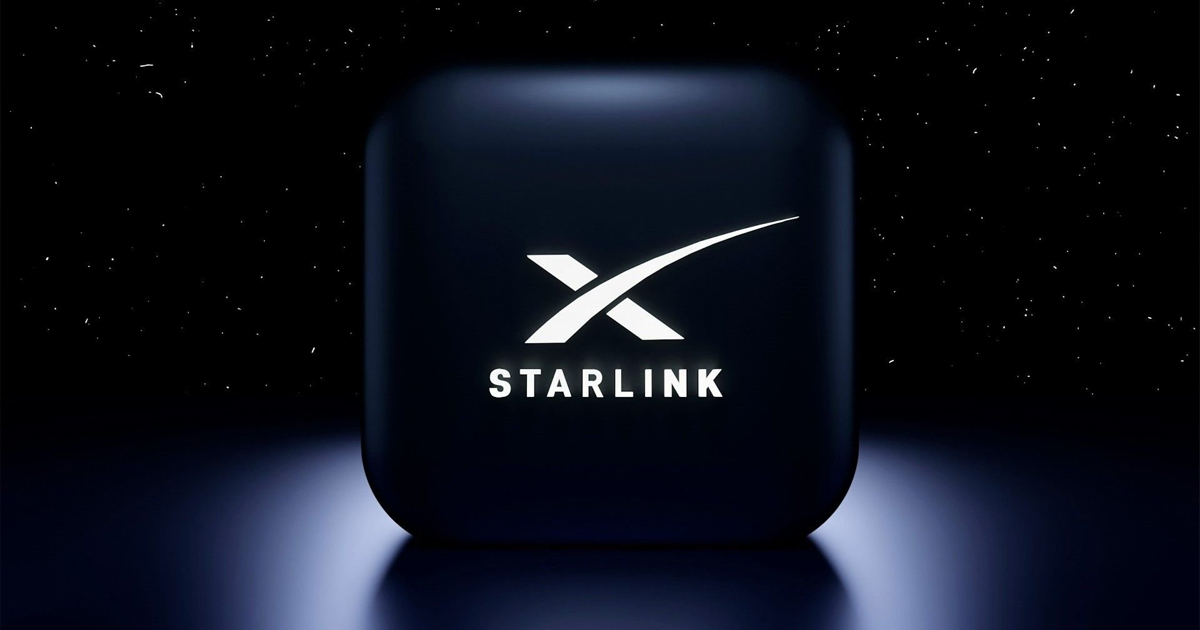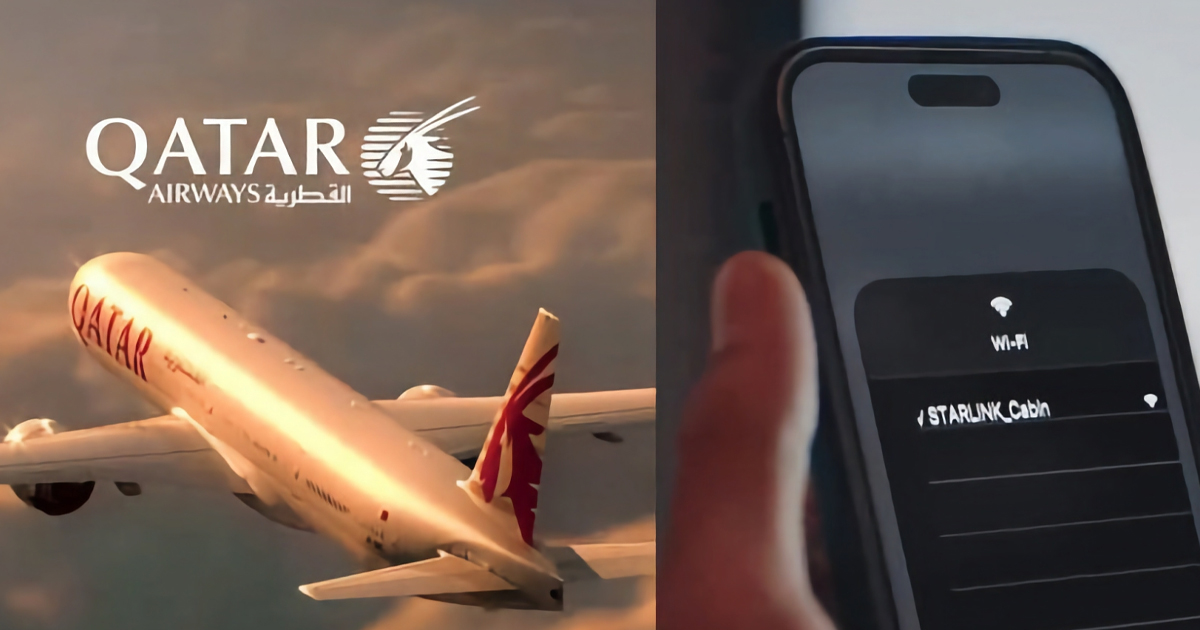As connectivity becomes more paramount in our daily lives, the advent of satellite internet services such as Starlink by SpaceX is revolutionizing how one communicates across distances or while on the move. Passengers traveling by commercial flight have much to gain from in-flight internet through Starlink. This article explores the advantages of Starlink’s in-flight internet, shows the countries involved in its development, and discusses how this technology helps passengers keep in touch with their homes and lives while flying at 35,000 feet. We will explore in this article the first experiment of Qatar Airways in testing fastest internet and its advantages for passengers.
Qatar Airway’s Biggest Leap

With as much routine access as air travel, Qatar Airways has taken the biggest leap forward by introducing the world’s first Boeing 777 with Starlink from SpaceX. This technological innovation symbolizes a giant leap for in-flight connectivity, providing passengers with speeds and reliability over the world’s internet for nearly cruising at 30,000 feet. The paper identifies Qatar Airways’s significance to Starlink’s integration into their fleet, the technological innovations surrounding such an association, and what it holds for future in-flight entertainment and connectivity.
What is Starlink?
Starlink is a satellite internet constellation developed by SpaceX to make high-speed internet connection readily available worldwide. The network comprises thousands of LEO satellites that talk with ground stations and user terminals to provide internet service. This difference between the traditional satellite internet that can get high latency due to the distance covered by satellites in geostationary orbit makes this particular satellite internet constellation of SpaceX overcome the high latency problem and offer high speed.
How Does It Work?
The Starlink system works as satellites are launched into low Earth orbit at about 550 kilometers or roughly 340 miles above the Earth’s surface. In this way, each satellite covers a particular ground area by communicating with user terminals and ground stations to give seamless internet. For internet connectivity during flight, aircraft are equipped with antennas from Starlink. These connect to satellites overhead to ensure access to fast and reliable internet service for the passengers on board.
Advantages of Starlink’s Internet for In-flight

1. Extremely Fast Networking
The most crucial benefit of Starlink’s internet for in-flight purposes is the networking, which provides extremely high-speed connectivity. Individuals can browse internet speeds as good as or better than typical home broadband. They can stream, download and share content without interruptions and lags that come with traditional in-flight Wi-Fi. Whether they want to watch a movie, attend a video call, or surf social media, passengers can have a lag-free online experience
2. Low Latency
The LEO satellites of Starlink minimize latency considerably compared to the traditional satellite-based internet service. Although in traditional systems, latency exceeds 600 milliseconds, Starlink reports latency of up to 20-40 milliseconds. This brings real-time applications such as video conferencing and online gaming closer to reality, making in-flight connectivity more practical and enjoyable.
3. Global Coverage
Starlink has a unique advantage, as it can serve unserved areas. Some internet service providers cannot serve some areas with traditional technology, but Starlink can reach all parts of the world, including oceans and remote locations. For instance, this global service is handy for international flights, as passersby can virtually stay connected anywhere.
4. Cost Effective
It may save airlines money through Starlink’s in-flight internet. Traditional in-flight Wi-Fi services usually depend upon expensive ground infrastructure or satellite systems requiring huge investments. Starlink Satellite constellation means that airlines can now offer reliable internet service without high costs associated with earthly infrastructure.
5. Passenger Experience
Indeed, the in-flight Internet is one of the most important components of the passenger experience. The capability through Starlink will enable airlines to enhance the service value proposition of passengers by keeping them in touch with friends, family, and work during travel time.
Advantages to Passengers: Staying Connected to Home

Here is the detail of advantages easpecillay for the passengers how thy can stayed touch to their families and friends.
Remote Work and Business Continuity
In today’s digital age, staying connected is often essential for business travelers. Whether sending emails, attending video conferences, or working remotely, Starlink sets passengers up to be productive on flights. This connectivity can run business operations continuously by keeping executives and remote workers ahead of the work without losing any beat.
Keeping in Touch with Family and Friends
Travelers require access to loved ones back home. Starlink provides the ability to use messaging apps, video calls, and sharing moments of traveling with loved ones in real-time. Passengers at 35,000 feet can still “check in” with family members and friends at home with Starlink high-speed internet.
Entertainment and Relaxation
Streaming movies, music, and shows has become necessary for long-haul flights. High-speed internet via Starlink ensures that passengers do not encounter buffers or interruptions to their viewing content at times when they want to view. The passengers can further communicate through social networks, play online games, or listen to other forms of entertainment requiring a stable connection, making their flight experience enjoyable.
Educational and Professional Development
A high-speed and reliable connection will allow passengers also to use flight time for personal development, self-education, and learning. All professional development coursework will be completed onboard Starlink, whether online classes or listening to educational podcasts.
Latest Information
The passengers can get up-to-date information related to the travel, that is, regarding the flight status, weather conditions, and connecting flights. This connectivity allows travelers to be based on real-time information, ensuring that traveling becomes comfortable. Checking in from the seat reduces all sorts of inconvenience caused by disruptions and, thus, improves overall satisfaction.
Overcoming Long Hours End
Crossing multiple time zones is hard, too, in terms of meeting organization and taking concrete action with people back home. In Starlink, passengers can converse in real-time, and schedules are quite easy to adjust if one stays in contact thousands of miles away. This is priceless for personal and business relationships.
Consistent Coverage in International Flights
For cross-continent flying airlines, Starlink ensures seamless flights without any discontinuation of connectivity when the flights cross international skies. Traditional in-flight internet providers frequently rely on partnerships with regional satellite providers to ensure connectivity coverage, and, as a result, their service often drops upon crossing international airspace. Starlink, with its comprehensive satellite network, eliminates such issues. Connectivity is ensured throughout the entire flight, regardless of the route taken.
Country Contributions to Starlink’s In-flight Revolution
This in-flight Internet of Starlink has been developed and deployed by a cross-border collaborative effort. Countries like the U.S., the UK, Qatar, and others have played critical roles in advanced technology and its deployment by making this a reality for global air travelers. Here’s a look at how these countries contribute to the rise of in-flight connectivity.
United States
It is quite clear that the United States is leading this revolution by launching thousands of satellites into orbit and forming a global network able to provide internet services at very high speeds to the aviation industry, thanks to companies such as SpaceX and Starlink, run by Elon Musk. Firstly, the U.S. Federal Aviation Administration has collaborated with SpaceX to make Starlink services as safe and viable as possible for flight operations. Second, American airlines such as Delta and United are pioneers of this technology, giving any airline that uses it a huge edge in the aviation industry.
United Kingdom
The UK has also played an important role in the development and creation of Starlink technology, especially regarding regulatory approval and infrastructure facilities available regarding satellites. Because airlines based in the U.K. are British Airways and Virgin Atlantic airlines, which are major air travel global facilitators, these airlines would take advantage of the Starlink satellite internet for the first time to make sure that more and more people flying from and to the U.K. benefit from high-speed internet connectivity onboard.
The U.K. government’s innovative move in propelling space technology had also sped up the rollout of Starlink.
Qatar
Qatar Airways is indeed one of the first airlines to introduce Starlink’s in-flight internet technology to its fleet, which will put the airline at the pinnacle rung in terms of using high-speed internet technologies by their passengers. One of the countries that has taken a strategic focus on being at par with others in terms of aviation excellence is Qatar, which invests heavily in an enjoyable and convenient passenger experience on the ground and in the skies.
Qatar Airways proudly says that its Boeing 777 aircraft are equipped with Starlink, providing the world’s best in-flight connectivity, enabling passengers to have more access to stay connected, be more productive, or have more fun during their flight.
European Union
Germany and France are some European countries ensuring that technology geared towards Starlink improves by working hand-in-hand on the regulation approval process and fueling innovations into space. European airlines like Lufthansa and Air France have talked with Starlink about whether they could include these services in their long hauls. This would be a competitive edge where connectivity is a major factor on lengthy flights worldwide. The European aviation market will benefit immensely from the technology, and travelers are sure to be connected to the whole of Europe even when flying over the most remote areas.
Why Qatar Airways?
Qatar Airways has been observed to be an airline concerned with service standards onboard its aircraft- from quality service to technological wonders in aircraft design. The airline has always tried to make every possible segment of air travel flawless for passengers. Qatar Airways’ partnership with Starlink appears to be very well aligned with the mission of providing the best flying experience so that travelers can always be connected as they go.
Qatar Airways recently became the world’s first airline to operate a series of Boeing 777 carriers with Starlink as part of this initiative to re-engineer inflight connectivity. Qatar Airways is now at the forefront of an innovative effort to reshape communication technologies within the aviation industry.
Conclusion
Starlink’s in-flight internet marks a fundamental and revolutionary step in staying connected as we travel. Several countries, such as the United States of America, the United Kingdom, Canada, Australia, and even the European Union, do crucial work in facilitating the rollout of Starlink technology and allowing airlines to make available critical internet services for passengers. It is high time the world learns to appreciate connectivity with a game-changing in-flight internet like Starlink – connecting travelers with their lives at 35,000 feet, whether business or leisure travel, to keep personal relationships alive. In the coming days, it can also revolutionize the world of the internet.

As a versatile and creative content writer, I craft compelling narratives that captivate and engage readers. With a keen eye for detail and a passion for storytelling, I transform ideas into impactful content. Clients choose me for my ability to understand their vision, deliver high-quality work on time, and provide a unique voice that resonates with their audience.
